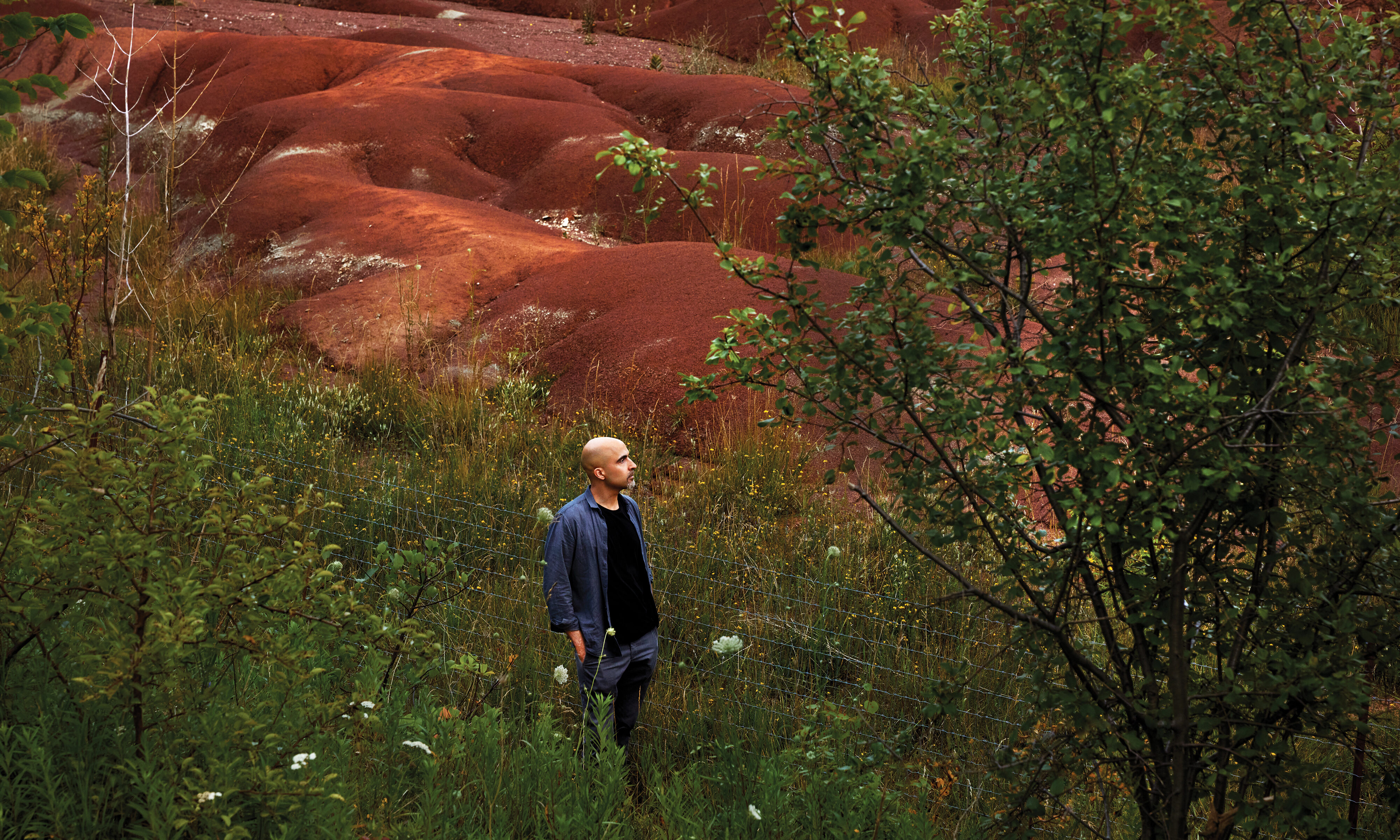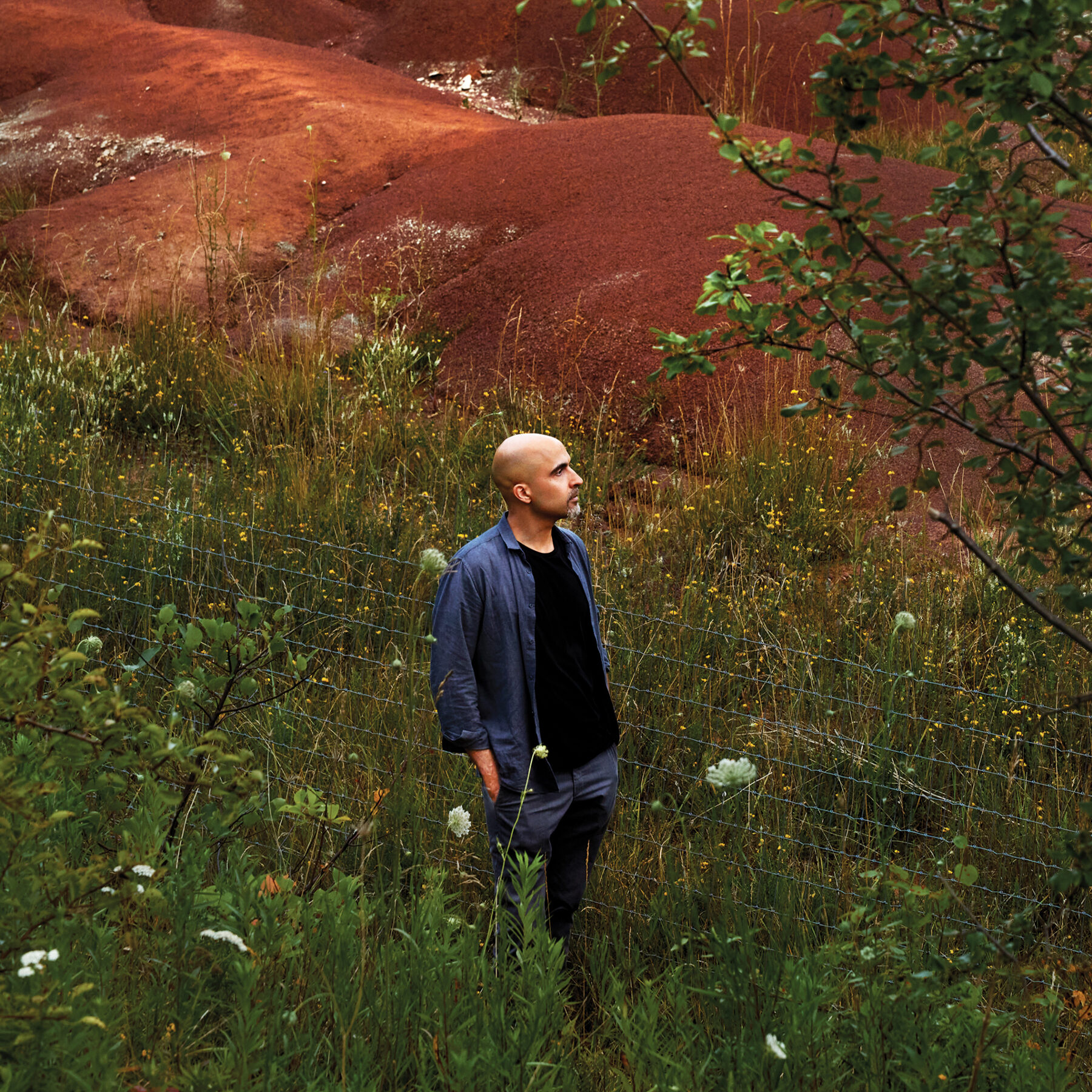Amin Alsaden has always had “a very complicated” relationship with institutions. Growing up in Iraq under Saddam Hussein’s rule, he lived near some of the country’s most elite culture venues—but because he came from a family that was critical of the regime, he rarely set foot in them. Still, he remembers being awestruck by the “bizarre” contemporary art he glimpsed through the windows.
More than 30 years later, even with a successful career as a curator, educator and scholar, the feeling of looking in from the outside remains familiar.
Despite his experiences teaching at institutions like the Graduate School of Design at Harvard and the American University of Sharjah, and having written for publications including Artforum, Harvard Design Magazine and the Journal of the Society of Architectural Historians, among others, he has found Canada’s art world to be impenetrable.
“Almost six years after arriving here, I [still] feel like I’m struggling to find my way in and to be accepted,” says Alsaden, who left Iraq in 1997, eventually settling in Canada after earning a master’s degree from Princeton and a PhD from Harvard.
Six years after arriving here, I feel like I’m very much on the outside.
It’s an experience typified by an interaction with a museum director he encountered in his search for work.
Alsaden was talking about the lack of representation he saw in the world of Canadian art, especially in a richly diverse city like Toronto; the museum director agreed with his assessment, and offered an explanation. He looked across at Alsaden, an Iraqi curator with degrees in architecture and art from Ivy League schools, and said: “We can’t find qualified racialized people.”
Alsaden looked over one shoulder, then the other, and replied: “Don’t you realize that I’m networking because I’m looking for opportunities? And I don’t know if I’m going to find them, either at your museum or anywhere else, because people like you refuse to see us.”
It was this desire to be seen, this refusal to go unseen, that inspired Alsaden’s 2022–2023 exhibit Looking the World in the Face.
Visiting Ottawa in 2021, he was enthralled by the diversity he saw in the Canada Council for the Arts’ Art Bank, a collection of contemporary art by more than 3,000 Canadian artists.
It inspired him to submit a proposal for an exhibition marking the Art Bank’s 50th anniversary, its premise simple and subversive: “You had 50 years of primarily celebrating mainstream artists. How about we take this [opportunity] to centre others?”
To his surprise, his proposal was selected, and Alsaden went on to curate an exhibit of faces—from self-portraits to comics to historical figures—that would reflect Canada’s true diversity using exact percentages from the census as a guide. The only exception was Indigenous artists, who he exhibited at three times their rates on the census, in consideration of their genocide and erasure in this country.
Some saw Alsaden’s exhibit, which took over the ground floor of the Canada Council for the Arts building for nearly a year, as “radical diversity, radical representation,” a description Alsaden rejects entirely. “There’s nothing radical about it. It’s actually the reality. What makes it radical is that you never see it in institutions.”
His next exhibit grew out of the realization that the Art Canada Institute, a not-for-profit and registered Canadian charity housed at the University of Toronto’s Massey College, had never represented Arab or Muslim artists.
When he pressed the ACI’s leadership on this, they asked him to curate an online exhibit to counter this historic omission.
There’s nothing radical about [exhibiting art by racialized people]. It’s actually the reality. What makes it radical is that you never see it in institutions
For this Lands Within exhibit, Alsaden assembled 12 Canadian artists whose landscape photography spanned Iran, Lebanon, Iraq, Algeria, Tunisia, Morocco, Egypt, Tunisia, Iran, Palestine and Saudi Arabia.
They were melancholic photographs that evoke a sense of longing, loss and displacement, of leaving behind those lands, mirroring Alsaden’s own displacement from his native Iraq.
A week before the exhibit’s release date, when it had already been approved, edited and primed for launch, the ACI’s managing editor wrote an email to Alsaden informing him that the works would be subject to a last-minute “sensitivity review.”
This shocked Alsaden, who wrote a defiant email back asking for clarity and more information, adding he “categorically refused any attempt at censorship” and would not “normalize censorship by calling it a sensitivity review.” The ACI, for its part, had said it wanted to make sure that the content was not “offensive or insensitive” to its readers.
“All of a sudden, our identities are insensitive and offensive to you?” Alsaden wondered. Still, he ended by saying that if he had misunderstood, he welcomed clarification.
Then, he convened the featured artists to tell them what had happened. He was conflicted about what it would mean to pull out of the exhibit a week before its slated release, after working on it for almost a year.
“These opportunities are precious and they’re important and they are fantastic,” Alsaden says. “They are about representation. So, if we were to pull out in protest, we’d be participating in erasure.”
The response among the artists in the virtual room was unanimous: “We don’t want to do this anymore,” they said. “This is not acceptable. And we don’t want to be censored like this.”
A response from the ACI came the next day, congratulating him on the launch of the exhibition, which had gone live. Alsaden took a screenshot, then told them to take it down and informed them that the artists were pulling out.
(ACI says content reviews are a standard part of the editorial process and notes no changes were made to the content of the exhibit. “While we were disappointed with this outcome, we fully respect [Alsaden’s] decision,” they said via email. “As an organization committed to creating a multivocal conversation around Canadian art and art history, we continue to work with a variety of artists, authors, and content creators.”)
Rana Nazzal Hamadeh, a Palestinian-Canadian artist based between Ottawa and Ramallah, was one of the contributors to the Lands Within exhibit. She was in the virtual room the day that Alsaden gathered the artists to tell them what had happened and was struck by how committed Alsaden was to establishing a consensus that was untainted by his own views, opting to have the artists decide for themselves a course of action.
“He even offered to leave the room,” Hamadeh says. “I think he was trying to make sure that artists give their opinion before he gives his. But it went really well. Everyone was pretty much on the same page.”
The exhibit remained up for a few hours on November 28, 2023. “It was the shortest running exhibition in my life. But it was beautiful,” Alsaden says.
When news of the exhibit’s cancellation spread, Alsaden received “really wonderful letters telling me about how heroic this was and how defiant. I always rejected that,” he says. “I don’t want to frame it as heroic or defiant, but maybe as a preservation of values, of dignity, of ways of working that we want to see in the world.”
Hamadeh herself has experienced the dignity and care that Alsaden strives to offer in his practice, beginning with his time mentoring her through a program offered at York University’s art gallery.
“He gives you a lot of time and attention,” Hamadeh says. “When you’re talking to him, you feel like you’re the only person that he thought about that day. He’s laser focused.”
If you do it with intention and with care, you will speak to the hearts and minds of so many people. But again, you’d have to want to do that. You have to have the will
Hamadeh says that Alsaden’s support of the artists he works with is one that extends beyond formal working relationships and official contracts.
“He’s given me a lot of practical advice about how to get my work out there. He’s sent me residencies I should apply to. He has followed up at every stage,” she says. “It’s not just like he does a project with you and then he’s done. And I heard this from other artists that he’s worked with. It feels like a continuing relationship. He doesn’t just finish with an artist and move on.”
Despite his experience with the Lands Within exhibit, Alsaden says he is an optimist. But it’s hard for him to ignore the gap between the promise of Canada and the reality he has experienced.
“I don’t take it for granted that I’m safe here. I’m grateful for that,” he says. Still, the idea that Canada is a place that welcomes people like him with open arms has proven to be a farce, he says.
Get the
Three from 3
newsletter
Join our global community of sharp, curious thinkers to receive a carefully curated email of the three most important things to read, see and do this week.
Listen and learn.
Tune into Third Culture Leaders, a podcast hosted by our co-founder and publisher, Muraly Srinarayanathas.
Explore how leaders skillfully navigate multiple cultural landscapes, leveraging their diverse backgrounds to drive innovation and change.
But it doesn’t have to be that way.
During his Looking the World in the Face exhibit, Alsaden was thrilled to see racialized visitors coming to take in the art.
Among the works on display was a colour photograph by Iranian artist Sanaz Mazinani of a woman in hijab, reading on the bus. One of his proudest moments was hearing from a woman in hijab who walked into his exhibit, who said, “I’ve never seen an exhibition where I felt I belonged.”
To Alsaden, it proved that Canada’s art establishments can, in fact, reflect the world accurately back to those who live in it.
“If you do it with intention and with care, you will speak to the hearts and minds of so many people. But again, you’d have to want to do that. You have to have the will.”

